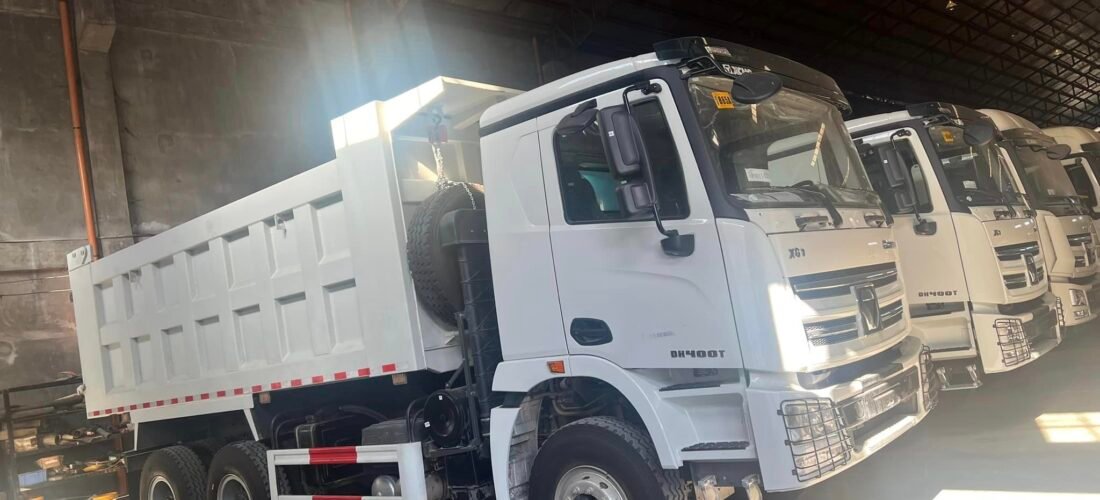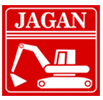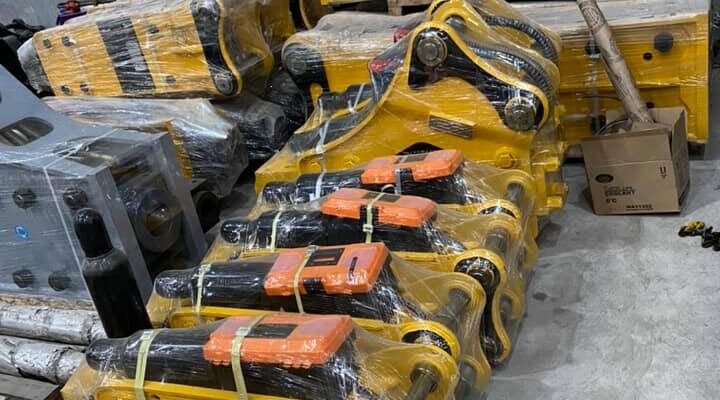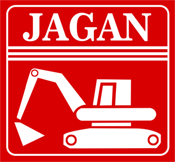
The Importance of Proper Maintenance for Construction Equipment
Proper maintenance of construction equipment is crucial for ensuring operational efficiency and safety on job sites. Regular maintenance helps to identify and rectify potential issues before they escalate into major problems, which can lead to costly repairs and downtime. By adhering to a scheduled maintenance routine, operators can enhance the longevity of their machinery, ultimately saving on replacement costs and maximizing return on investment. Equipment that is well-maintained operates more smoothly and efficiently, reducing the likelihood of breakdowns that can halt project timelines and disrupt workflows.
In addition to financial benefits, proper maintenance plays a significant role in promoting safety for operators and workers on construction sites. Faulty or poorly maintained equipment can lead to accidents and injuries, which can have severe consequences. Regular inspections and servicing ensure that all safety features are functional and that equipment is in compliance with industry regulations. This not only protects the well-being of personnel but also fosters a culture of safety within the organization, which is essential in the high-risk environment of construction.
Moreover, maintaining heavy construction equipment in peak condition can enhance its performance and productivity. Well-maintained machines operate with greater efficiency, providing better fuel consumption and reducing emissions, which is increasingly important in today’s environmentally conscious landscape. This efficiency translates to improved project timelines, as tasks can be completed more quickly and effectively. By prioritizing proper maintenance, construction companies can ensure that their equipment is always ready for the demands of the job, facilitating smoother operations and contributing to overall success in their projects.
Essential Maintenance Practices for Common Types of Construction Equipment
Construction equipment is essential for successful building and infrastructure projects. Proper maintenance is crucial for timely project completion, worker safety, and cost reduction. Here are key maintenance practices for common types of construction equipment:
- Excavators:
- Regular Inspections: Conduct daily checks for hydraulic leaks, engine oil levels, and wear on tracks and attachments.
- Lubrication: Ensure all moving parts are properly lubricated to minimize friction and prevent premature wear.
- Hydraulic System Maintenance: Change hydraulic filters regularly and monitor fluid levels to maintain optimal performance.
- Bulldozers:
- Blade Maintenance: Check the cutting edges and end bits for wear and replace them as necessary to ensure efficiency in material movement.
- Track Tension: Maintain proper track tension to prevent slippage and reduce wear on the undercarriage.
- Cooling System Checks: Regularly inspect the radiator and coolant levels to prevent overheating, especially in hot weather conditions.
- Cranes:
- Load Testing: Perform regular load tests to ensure the crane can safely handle its rated capacity.
- Wire Rope Inspection: Check for frays, kinks, or corrosion in the wire ropes, replacing them if any damage is found.
- Brake System Checks: Regularly test the brakes to ensure they are functioning correctly to prevent accidents.
- Backhoes:
- Attachment Inspection: Regularly inspect buckets and other attachments for cracks or wear and tear.
- Fluid Levels: Check and maintain engine oil, hydraulic fluid, and coolant levels to keep the machine running smoothly.
- Tire Maintenance: Inspect tires for proper inflation and any signs of damage to avoid unexpected downtime.
- Loaders:
- Engine Maintenance: Schedule regular engine tune-ups and check air filters to ensure efficient combustion.
- Bucket Inspection: Look for cracks or deformations in the bucket and make repairs as needed.
- Transmission Checks: Monitor transmission fluid levels and replace them as recommended by the manufacturer.
By adhering to these maintenance practices, construction companies can maximize the lifespan and efficiency of their equipment, ultimately leading to more successful projects and reduced costs. Regular training for operators and maintenance personnel is also recommended to keep them updated on the latest techniques and best practices, ensuring the equipment remains in top condition.
Daily Checks: What to Inspect Before You Operate Your Heavy Equipment
Before operating your equipment, it’s crucial to conduct daily checks to ensure safety and efficiency. Here’s a comprehensive list of what to inspect:
- Fluid Levels: Check oil, coolant, hydraulic fluid, and fuel levels. Ensure they are within the recommended ranges.
- Tires and Tracks: Inspect tires for proper inflation, tread wear, and any visible damage. For tracked equipment, check for wear and proper tension.
- Brakes: Test the brakes to ensure they are functioning correctly. Look for any leaks or signs of wear.
- Lights and Signals: Verify that all lights, including headlights, brake lights, and turn signals, are operational.
- Safety Equipment: Ensure that safety devices such as fire extinguishers, first aid kits, and reflective triangles are present and in good condition.
- Belts and Hoses: Inspect belts for wear and proper tension. Check hoses for cracks, leaks, or signs of deterioration.
- Battery: Check battery terminals for corrosion and ensure connections are secure. Make sure the battery is charged.
- Filters: Inspect air and fuel filters for cleanliness and replace them if necessary.
- Operational Controls: Test all operational controls and instruments to ensure they are functioning properly.
- Structural Integrity: Look for any signs of damage to the frame, body, or chassis of the equipment.
- Attachments: If applicable, ensure that any attachments are securely fastened and functioning as intended.
- Cleaning: Remove any debris or obstructions from the equipment that could interfere with operation.
By performing these daily checks, you can help prevent equipment malfunctions, ensure safety, and maintain optimal performance.
Scheduled Maintenance: Creating an Effective Maintenance Calendar
Creating an effective maintenance calendar is essential for ensuring that equipment and facilities operate smoothly, minimizing downtime and unexpected repairs. Here’s a guide to help you develop a scheduled maintenance calendar:
- Identify Assets: Start by listing all the assets that require maintenance, including machinery, vehicles, buildings, and systems. This will help you prioritize which items need regular attention.
- Determine Maintenance Needs: For each asset, identify the type of maintenance required—routine inspections, cleaning, repairs, or replacements. Consult manufacturer guidelines and industry standards to understand the recommended maintenance schedule.
- Set Frequency: Establish how often each maintenance task should be performed. This could be daily, weekly, monthly, quarterly, or annually, depending on the asset’s usage and condition.
- Assign Responsibilities: Designate team members or departments responsible for conducting each maintenance task. Ensure they are trained and equipped to carry out their responsibilities effectively.
- Use a Calendar Tool: Choose a calendar tool or software that suits your needs—this could be a simple spreadsheet, a dedicated maintenance management system, or an online calendar. Make sure it allows for easy updates and reminders.
- Input Maintenance Tasks: Populate the calendar with all scheduled maintenance tasks, including dates, descriptions, and responsible personnel. Color-coding tasks by type or priority can enhance clarity.
- Incorporate Flexibility: While it’s important to stick to the schedule, be prepared to adjust it based on real-time needs or unexpected issues. Regularly review and update the calendar to ensure it remains relevant.
- Monitor and Evaluate: Track the completion of maintenance tasks and evaluate their effectiveness over time. Use this data to refine your maintenance calendar and make informed decisions about future maintenance strategies.
- Communicate: Ensure that all team members are aware of the maintenance calendar and understand their roles. Regular communication can help reinforce the importance of scheduled maintenance.
- Review Regularly: Set a timeline for reviewing the maintenance calendar—monthly or quarterly—to assess its effectiveness and make necessary adjustments.
By following these steps, you can create a structured and efficient maintenance calendar that enhances the reliability of your assets and supports overall operational efficiency.
Tips for Storing Your Construction Equipment Properly to Prevent Damage
Storing heavy construction equipment properly is essential to prevent damage and extend its lifespan. Here are some tips to help you achieve that:
- Clean Equipment Thoroughly: Before storing, clean your equipment to remove dirt, mud, and debris. This helps prevent rust and corrosion while also allowing you to inspect for any damage.
- Inspect for Damage: Take the time to inspect all equipment for any wear and tear. Repairs should be made before storage to avoid worsening issues.
- Use a Covered Storage Area: Whenever possible, store equipment in a covered area, such as a garage or shed. This protects against weather elements like rain, snow, and sun exposure.
- Utilize Tarps or Covers: If indoor storage isn’t an option, use heavy-duty tarps or waterproof covers to shield your equipment from the elements.
- Check Fluids and Lubrication: Ensure that all fluids (oil, hydraulic fluid, fuel) are topped off and that lubrication is applied to moving parts to prevent drying out and corrosion.
- Secure Equipment Properly: Use chains, locks, or other security measures to prevent theft or unauthorized access, especially if storing outdoors.
- Store on Stable Ground: Place equipment on a level and stable surface to prevent tipping or settling, which can lead to damage.
- Remove Batteries: If applicable, remove batteries from equipment and store them in a cool, dry place to prevent leakage or corrosion.
- Protect Tires and Tracks: Consider using tire covers or storing equipment on wooden pallets to protect tires and tracks from prolonged contact with the ground.
- Create an Inventory: Keep a detailed inventory of all stored equipment, noting their condition and any maintenance performed. This will help you track and manage your equipment effectively.
By following these tips, you can ensure that your heavy equipment remains in good condition and ready for use when needed.
Invest in a Proactive Approach to Maintain and Extend the Life of Your Construction Equipment Today!
In conclusion, adopting a proactive maintenance strategy for your construction equipment is essential for maximizing its lifespan and performance. By investing in regular inspections, timely repairs, and preventive measures, you can not only reduce unexpected downtime but also enhance operational efficiency and safety on the job site. A well-maintained fleet not only saves you money in the long run but also ensures that your projects are completed on time and within budget. Take the initiative today to protect your investment and ensure that your equipment continues to operate at its best for years to come.
If you’re looking for a reputable Heavy Equipment Supplier in the Philippines, JAGAN Enterprises is the company for you! Call us today at +639178260291. Talk to our team so they can assist you with all your heavy equipment needs. You can also visit our Facebook Page to learn more or contact us by clicking this link.


